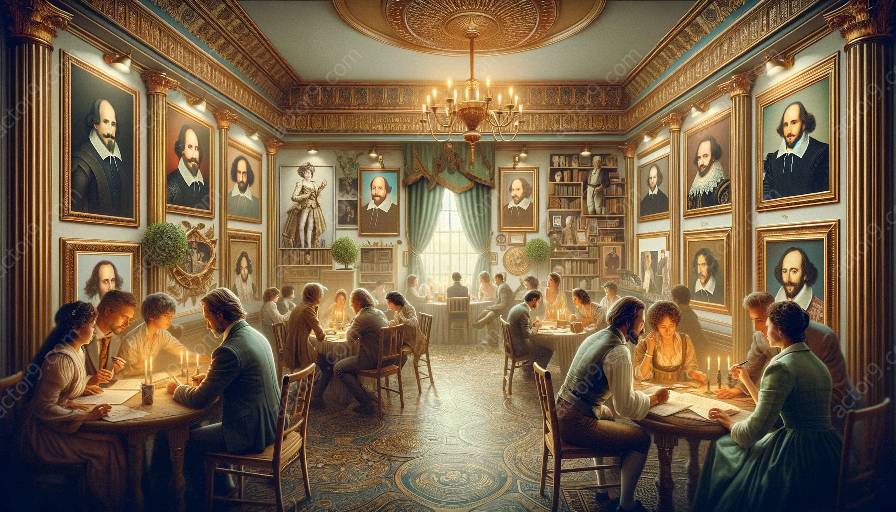William Shakespeare's works have left an indelible mark on the world of literature and theatre. The performances of his plays were not only renowned for their compelling storytelling and poetic language but also for the incorporation of music and dance, which added depth, emotion, and spectacle to the theatrical experience.
The Historical Context
During Shakespeare's time, music and dance were integral parts of daily life and communal gatherings. They were ubiquitous in social activities, religious ceremonies, and formal events. The practice of incorporating music and dance into theatrical performances was a natural extension of this cultural backdrop.
In Shakespearean England, music and dance were not separate from the dramatic performance but were seamlessly integrated into the fabric of the play. From courtly masques to lively folk dances, the use of music and dance in the theatre was a reflection of the broader society's love for these art forms.
Theatrical Impact
Music and dance served multiple functions in Shakespearean performances. Firstly, they contributed to the overall ambiance of the play, setting the mood and tone of different scenes. Whether it was a solemn ballad or a lively jig, the choice of music and dance underscored the emotions and themes present in the narrative.
Secondly, music and dance symbolized the hierarchical structure of Shakespearean society. The type of music and dance performed often corresponded to the social status of the characters. For example, refined courtly dances were associated with nobility, while spirited folk tunes represented the common folk.
Thirdly, music and dance provided a form of non-verbal communication, allowing characters to convey emotions and intentions without relying solely on dialogue. This added a layer of complexity to the performances and enriched the storytelling process.
Influence on Famous Shakespearean Actors
Famous actors who have portrayed Shakespearean characters have often embraced the use of music and dance in their performances, recognizing the powerful impact these elements can have on the audience.
For instance, renowned actors such as Kenneth Branagh, Ian McKellen, and Judi Dench have all highlighted the significance of incorporating music and dance to enhance their portrayals of Shakespearean characters. By leveraging these elements, they were able to bring a deeper sense of authenticity and emotional resonance to their performances.
These actors have often spoken about the transformative effect of music and dance on their interpretations of Shakespeare's works, emphasizing how it allowed them to inhabit the world of the play more fully and connect with the audience on a visceral level.
Shakespearean Performance
The fusion of music and dance with Shakespearean performance continues to be a cornerstone of modern productions. Contemporary theatre companies and directors recognize the enduring appeal of these elements and continue to explore innovative ways to integrate music and dance into their interpretations of Shakespeare's plays.
By infusing the traditional with the contemporary, modern performances of Shakespearean works often utilize a diverse range of musical genres and dance styles to breathe new life into the classic texts.
Ultimately, the role of music and dance in Shakespearean performances extends beyond mere ornamentation. It is an essential component that enriches the theatrical experience, offering audiences a multi-sensory journey into the world of Shakespeare's timeless stories.

























